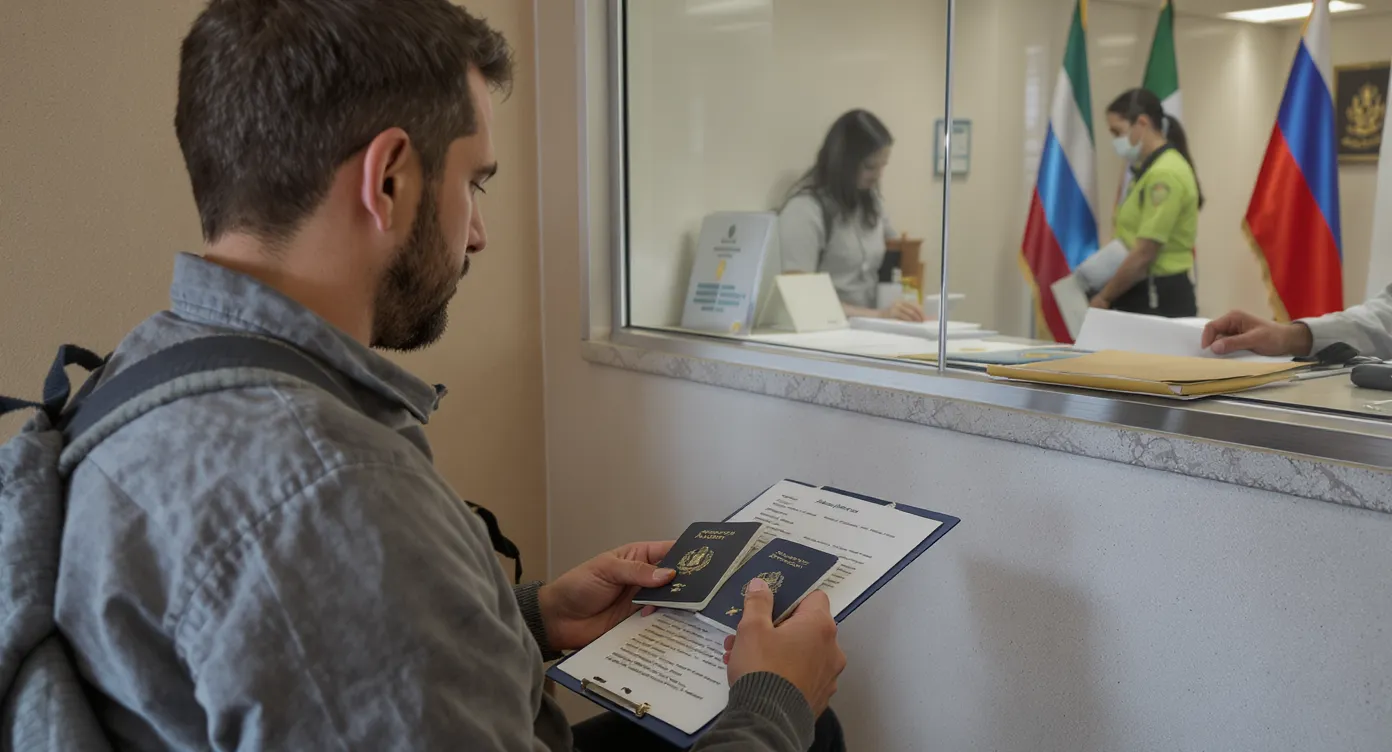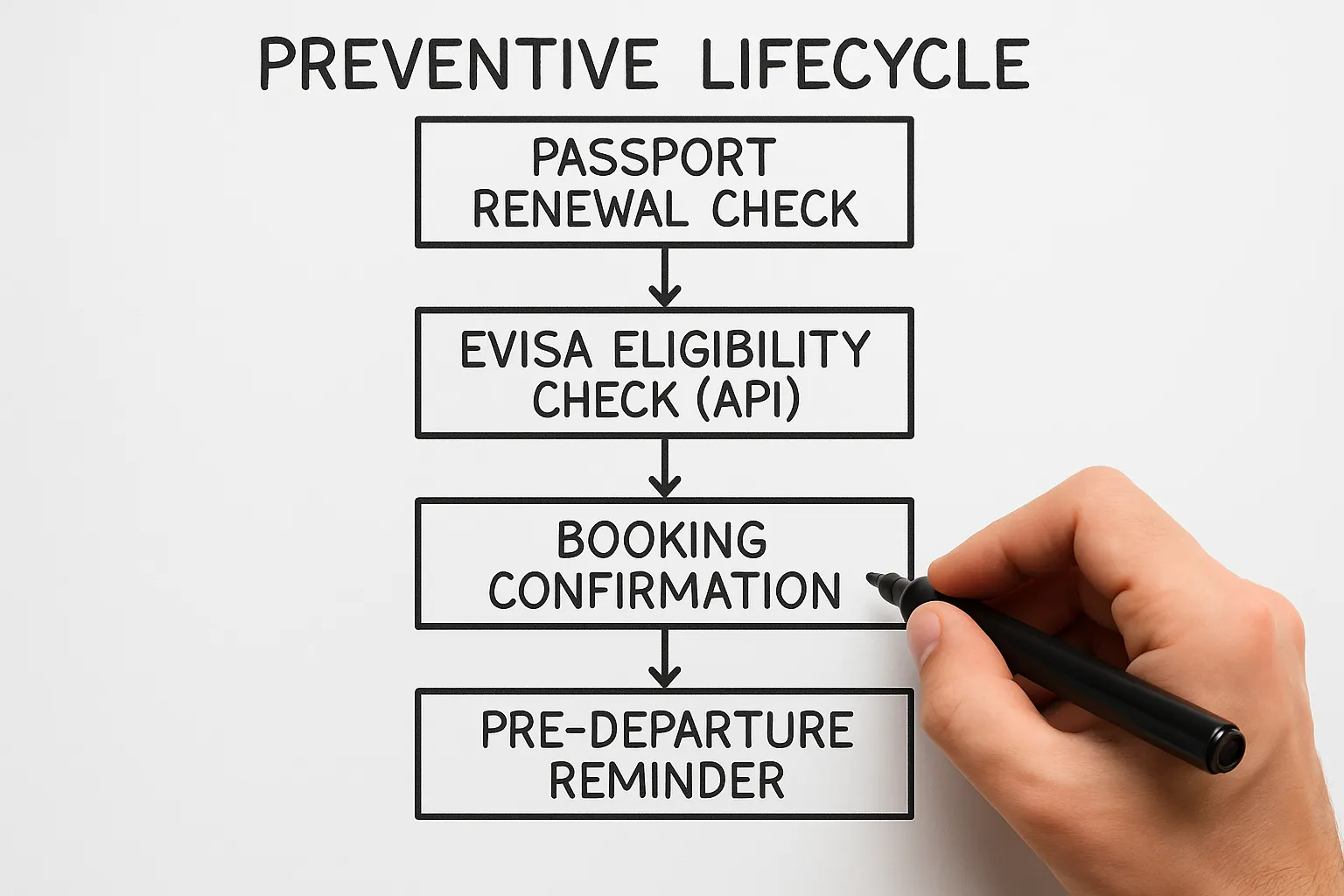What to Do If Your Passport Expires Mid‑Trip—and How It Affects Your eVisa

Imagine landing in Bali only to discover your passport will expire halfway through your surf retreat—or worse, while you’re waiting for a connecting flight home. Few travel setbacks are more stressful, especially when an electronic visa (eVisa) is linked to the very document that’s about to lapse. This guide explains exactly what to do if your passport expires mid-trip, why it can invalidate your eVisa, and the practical steps—backed by official rules—to get you home (or keep you exploring) without drama.
Why Passport Validity Rules Matter More Than You Think
Airlines, immigration officers, and even hotel front desks rely on a single principle: your passport must be valid both on the day you enter and the day you leave a country. In many destinations, it also needs to remain valid for an additional period—often six months—beyond your planned departure. According to the International Air Transport Association’s Timatic database, more than 70% of countries enforce a “six-month rule”. Carriers can be fined thousands of dollars for transporting a passenger who doesn’t meet that rule, so they typically refuse boarding long before an immigration officer has the chance.
Snapshot of Common Validity Requirements
| Region | Typical Minimum Validity on Arrival | Example Countries |
|---|---|---|
| North America | Passport must be valid for the entire stay | United States, Canada |
| Schengen Area | Valid 3 months beyond intended departure (plus issued within last 10 years) | France, Spain, Germany |
| Asia-Pacific | Often 6 months beyond entry | Indonesia, Thailand, Vietnam |
| Middle East | 6 months in almost all cases | UAE, Saudi Arabia, Qatar |
| Africa | 6 months plus two blank pages common | Kenya, Tanzania, South Africa |
Always confirm with official government sources or an automated visa-rules tool before you travel.
The Hidden Link Between Your Passport and Your eVisa
An eVisa isn’t just a PDF you print or save to your phone; it’s a digital record permanently tied to your passport number and its expiration date. When a passport expires:
- The eVisa record can no longer be matched at border control, effectively voiding the authorization.
- Some countries’ systems automatically cancel an eVisa when the corresponding passport’s validity drops below their minimum threshold.
- Airlines using Timatic will flag the mismatch and may deny boarding at check-in.
For example, India’s eVisa policy states that the document is valid only with the same passport used during application. Replace the passport and you must either transfer the eVisa or submit a fresh application.
Passport Expiring Mid-Trip? Step-by-Step Crisis Plan
-
Calculate your legal window right now
Check the exit-rule for your current location. If you’re in Italy with a passport expiring in 10 days and the Schengen rule is 3 months beyond departure, you’re already non-compliant. -
Contact your nearest embassy or consulate
Locate the closest mission via your home-country foreign affairs website. Many embassies issue emergency passports (also called temporary or limited-validity passports) in 24–72 hours. Bring proof of travel (flight ticket) and passport photos. -
Ask about a local passport extension stamp
A handful of countries—such as the United States and the Philippines—may add a page or stamp extending validity in very limited circumstances. It’s rare but worth asking. -
Re-check airline acceptance
Even with an emergency passport, some airlines require the new document to match your booking details. Most carriers will update the record for free if you present both passports at the desk. -
Update or transfer your eVisa
- Some immigration portals offer a "transfer eVisa" function for new passports (e.g., Australia’s ETA, India’s eVisa).
- If no transfer exists, apply for a fresh eVisa immediately using the new passport number. Priority processing may be available for a fee.
- Carry both passports (expired and emergency/new) plus printed eVisa confirmation until you exit the country.
-
Keep digital and printed backups
Scan or photograph every document—old passport, new passport, embassy receipt, updated eVisa—and store them in encrypted cloud storage. Border officials often prefer printed proof when systems are down.

Special Considerations for Transit Airports
Many travelers overlook transit-country rules. If your passport expires during a long layover, you may be forced into the arrivals hall—triggering local visa and validity rules you hadn’t planned for. Check each transit state’s policy before leaving your origin city. Tools like the U.S. State Department’s Country Information pages and Timatic-powered airline sites can help.
How to Transfer an eVisa to a New Passport
For detailed instructions, see SimpleVisa’s dedicated guide on how to transfer your e-Visa to a new passport. In general, you’ll need:
- Old and new passport scans (bio page)
- The original eVisa grant notice or approval number
- A short online form explaining the reason (passport lost, stolen, or expired)
- A small processing fee (varies by country)
Processing times range from a few minutes (Australia, New Zealand) to several business days (India, Kenya). If time is tight, opt for priority or express lanes where offered.
Preventive Strategies for Future Trips
-
Renew early—really early
The U.S. Department of State now recommends renewing passports at least nine months before expiry due to processing backlogs. -
Use SimpleVisa’s automated rule engine
Travel brands can embed SimpleVisa’s API or no-code widget to surface passport validity warnings inside the booking flow, preventing mid-trip surprises and generating ancillary revenue when a new eVisa is required. -
Carry a secondary travel document
Dual citizens can mitigate risk by traveling with both passports, provided they enter and exit each country with the same document used at entry. -
Enroll in your government’s traveler program
U.S. citizens can register trips with STEP; Canadians with ROCA. These programs expedite embassy assistance in emergencies. -
Set calendar alerts
Add passport and eVisa expiry dates to a shared digital calendar and enable reminders 12, 6, and 3 months in advance.

Key Takeaways
- A passport expiring mid-trip can instantly render your eVisa invalid because the digital record is tied to that passport number.
- Most countries enforce at least 3–6 months of remaining validity beyond your departure date; airlines police the rule aggressively.
- If caught abroad, secure an emergency passport from your embassy, then transfer or re-apply for the eVisa linked to the new document.
- Print and carry both the old and new passports plus your updated eVisa until you are back home.
- Avoid the headache by renewing early and using tools like SimpleVisa’s eligibility API to catch problems before checkout.
Travel shouldn’t be derailed by an overlooked expiry date. Whether you’re an individual traveler or a booking platform looking to protect customers (and your bottom line), proactive document management is the safest route. Ready to automate these checks and offer seamless eVisa transfers? Book a SimpleVisa demo and keep every journey on track.